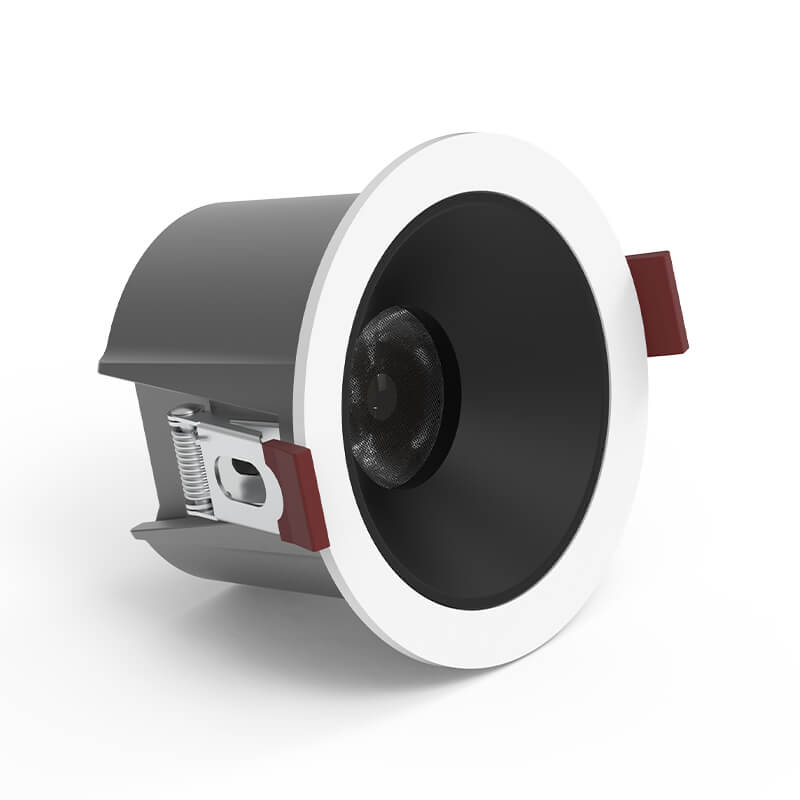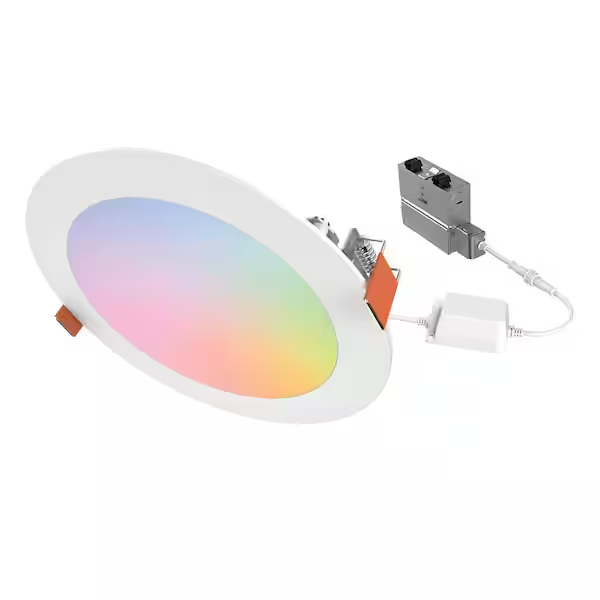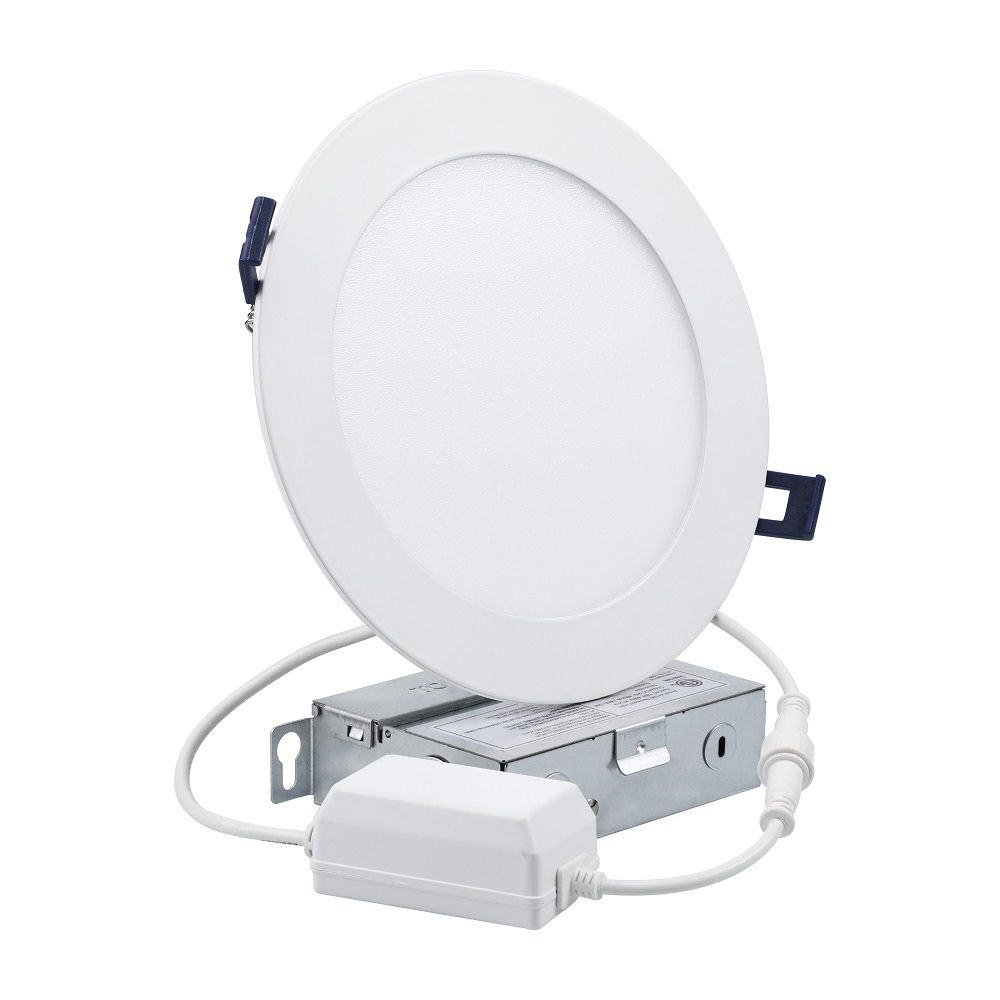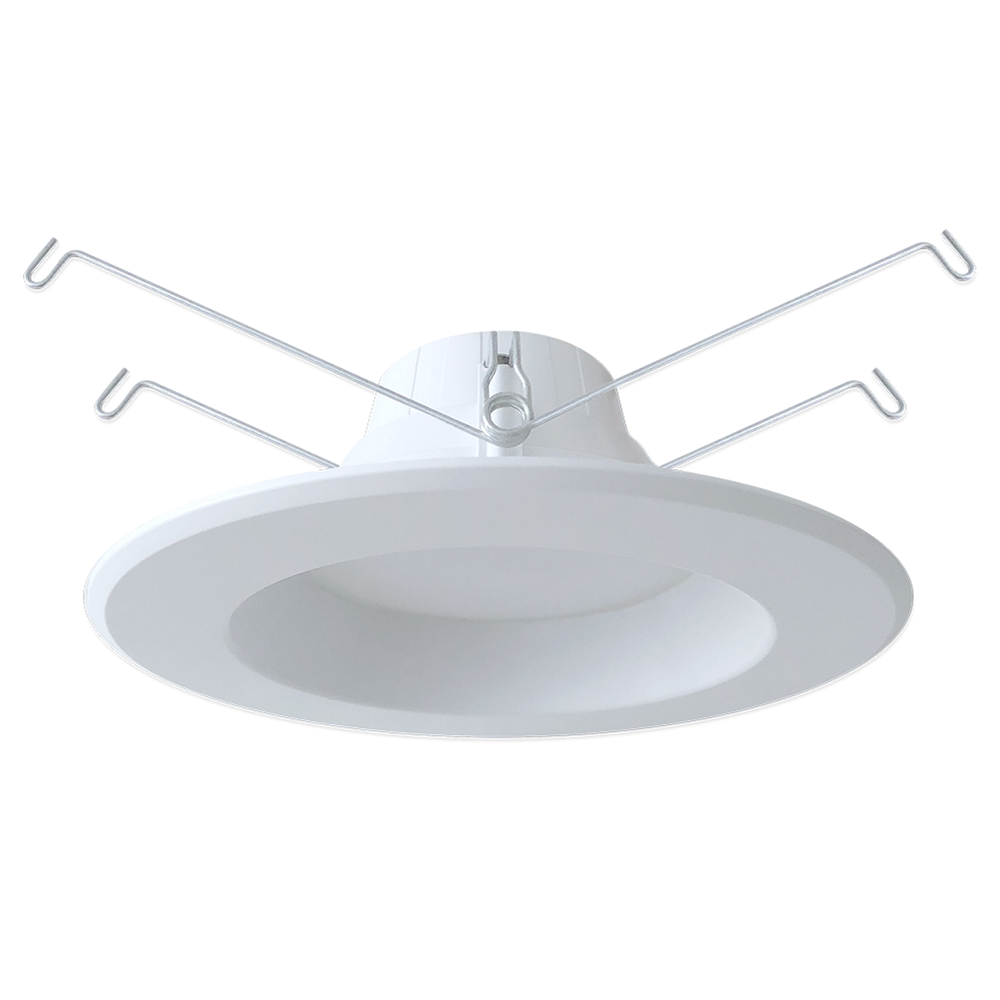Introduction to Smart Recessed Lighting
Smart recessed lighting is an innovative way to illuminate your space. It integrates advanced technology such as wireless connectivity and automation into your lighting setup. With smart recessed lights, you can control brightness, color temperature, and sometimes even color from your smartphone or smart home hub. These fixtures fit flush into your ceiling, providing a clean and modern look while offering the convenience of smart technology.
Smart recessed lighting brings a wealth of benefits to any home. They are energy-efficient, customizable, and can adapt to various moods and occasions. Whether you want a warm, cozy glow for a quiet evening or bright, vibrant colors for a party, smart recessed lights can deliver. They also contribute to home safety by allowing you to schedule lighting, so your house appears occupied even when you’re away.
When choosing the best smart recessed lighting, consider compatibility with your existing smart home ecosystem. Popular brands such as Philips Hue, Sylvania Lightify, and Halo offer smart lighting solutions that could easily integrate with systems like SmartThings. It’s important to note that while some smart lights may require a hub like the Philips Hue Bridge, others can work directly with your smart home’s hub.
As you embark on selecting smart recessed lighting, remember to evaluate your needs against what’s available. Assess the installation requirements, compatibility with your smart devices, and the range of lighting control options. Keep an eye out for user-friendly features, good connectivity, and reliable performance. In the next sections, we’ll explore the factors to weigh when selecting smart recessed lights, and delve into specific brand pros and cons.

Factors to Consider When Selecting Smart Recessed Lights
When shopping for the best smart recessed lighting, various factors come into play. It’s essential to make an informed decision to ensure your lighting choices meet your expectations for functionality, design, and ease of use.
Compatibility with Your Smart Home System
The first thing to consider is whether the smart recessed lights are compatible with your existing smart home ecosystem. Check for compatibility with platforms like SmartThings, Amazon Alexa, or Google Assistant. Remember that some systems may need an additional bridge or hub.
Ease of Installation
Consider the ease of installation. Smart lights that require minimal wiring or changes to your current setup can make the transition smoother. Look for options that can fit into the existing recessed cans without extensive retrofitting.
Light Quality and Features
The quality of light, including brightness and color accuracy, is crucial. Evaluate if you need basic white lights or full RGB capabilities for mood settings. Lights with dimming features, preset scenes, and schedules offer increased flexibility.
Energy Efficiency
Opt for lights that provide energy efficiency. LED smart recessed lights consume less power and can significantly lower your electricity bill while being eco-friendly.
Product Lifespan
Always check the expected lifespan of the lights. Longer-lasting LEDs mean fewer replacements and hence, less hassle and cost in the long run.
Safety Certifications
Confirm if the lights have necessary safety certifications such as UL, ETL, or CSA. This is especially important if you need to comply with local building codes or homeowners association rules.
By keeping these factors in mind, you can select smart recessed lights that provide the convenience, ambiance, and cost-saving benefits suitable for your home. In the next sections, we will discuss further considerations such as brand pros and cons, control options, and color choices in smart lighting.

Smart Recessed Lighting Compatibility with Smart Home Ecosystems
When upgrading your home lighting to the best smart recessed lighting, it’s vital to ensure they work seamlessly with your current smart home systems. Compatibility is a key factor, and here’s what you need to consider:
Compatibility with SmartThings and Other Hubs
Many smart recessed lights, like the Philips Hue, require a specific bridge to connect to your network. However, they are well-supported by major smart home ecosystems including SmartThings. Ensure the lights you choose can integrate with your smart home hub without the need for additional, costly equipment.
Integration without a Hub
Some lighting options, designed with built-in Wi-Fi or Bluetooth, can connect directly to your home network and are controllable through apps. They eliminate the need for a central hub altogether. This can be an advantage if you prefer a simpler setup and fewer devices.
Voice Assistant Compatibility
Check if the lighting options are compatible with voice assistants like Amazon Alexa or Google Assistant. This will allow you to control your lights with simple voice commands, adding to the convenience and smart experience.
Compatibility for Different Platforms
If you’re using a multi-platform approach or planning to switch systems in the future, look for lighting solutions that support various protocols. Some lights are designed to be flexible and can work with more than one smart home system.
Compatibility is crucial for a harmonized smart home experience. By ensuring your smart recessed lighting choices can easily integrate with your existing smart home system, you’ll enjoy streamlined control and enhanced functionality.
Pros and Cons of Popular Smart Recessed Lighting Brands
When choosing the best smart recessed lighting for your home, it’s useful to review popular brands. Each brand comes with its own set of advantages and drawbacks. Let’s look at some leading names in this market.
Philips Hue
Pros:
- High compatibility with many smart home systems including SmartThings.
- Offers a wide range of colors and white shades.
- High-quality light output and features.
Cons:
- Requires the Philips Hue Bridge for full functionality.
- Higher price point compared to some other brands.
Sylvania Lightify
Pros:
- Known for easy integration with SmartThings.
- Offers color-changing and tunable white options.
Cons:
- Future updates and support may be uncertain.
- May need a hub for connectivity, depending on the setup.
Halo
Pros:
- Products like the Halo Home series are designed for easy use with smart systems.
- Some options might not require an additional hub.
Cons:
- Selection of smart color options may be limited.
- Navigation on the website might be challenging for some users.
When weighing pros and cons, consider what features are most important to you. Whether it’s the ease of installation, range of colors, compatibility, or cost, your priorities will guide your choice. Make sure to also keep in mind the product’s energy efficiency, safety certifications, and expected lifespan, as discussed earlier.

Installation Considerations for Smart Recessed Lighting
When installing smart recessed lighting, there are several key aspects to consider. These considerations ensure the installation process is smooth and that the lights perform optimally in your smart home system.
Assess Existing Wiring and Infrastructure
Check the existing electrical wiring in your home. Ensure it can support the new smart lights without extensive modifications. Most smart recessed lights fit into standard recessed cans, which simplifies installation.
Choose the Right Size and Type
Match the size of the smart recessed lights with your existing fixtures. Typically, sizes vary from 4 inch to 6 inch diameters. Selecting the correct size ensures they fit seamlessly into the ceiling.
Consider Ease of Installation
Opt for smart recessed lights that offer easy installation features. Some lights come with clips or adjustable brackets that snap right into place. This feature is preferable as it reduces the need for tools and extensive labor.
Needs for Additional Equipment
Determine if you need extra equipment like a hub or bridge. While some lights work directly via Wi-Fi or Bluetooth, others might require a dedicated hub to connect to your smart home system.
Integration with Smart Home Controller
Ensure the lights can integrate smoothly with your existing smart home controller. This might be a SmartThings hub, Amazon Alexa, or Google Assistant. Seamless integration allows for better control and automation of your lighting.
By addressing these installation considerations, you ensure your smart recessed lights not only enhance the aesthetic of your space but also function effectively within your smart home ecosystem.
Smart Lighting Control Options: Switches vs. Bulbs
When upgrading to the best smart recessed lighting, choosing the right control option is crucial. You have two main choices: smart switches or smart bulbs. Each option has distinct features and benefits tailored to different needs and preferences.
Smart Switches
Smart switches replace your traditional light switches. They allow control over existing lights without changing the bulbs. Here are some key points:
- Ease of Setup: Install in place of regular switches without extra wiring.
- Compatibility: Often works with any type of bulb, so no need to buy new bulbs.
- Cost-effective: Since there’s no need to replace every bulb, this could be a cheaper option.
Smart Bulbs
Smart bulbs replace your traditional bulbs and connect to your smart home system. Consider these factors:
- Enhanced Features: Offers color changes, dimming, and scheduling directly from your smartphone.
- Ease of Use: Simple to install, just replace the existing bulb.
- Higher Cost: Generally more expensive as you replace multiple bulbs throughout the home.
In conclusion, your choice between smart switches and smart bulbs will depend on your specific needs, home setup, and budget. Weigh the immediate convenience of smart bulbs against the long-term flexibility and cost savings of smart switches.
Evaluating Color and Tunable White Options in Smart Lighting
When upgrading your home with the best smart recessed lighting, color options play a vital role. Color-changing lights add vibes suitable for parties, serene evenings, or festive settings. Here’s how to evaluate these options:
Color Options in Smart Lights
- Wide Range: Advanced smart recessed lights offer a spectrum from soft pastels to vibrant hues.
- Mood Setting: Change colors according to mood or event with a simple tap.
- Integration: Ensure the lighting can integrate with your smart home system for seamless control.
Tunable White Options
- Adjustable Temperature: Shift from warm to cool white to mimic natural lighting.
- Daily Activities: Cool light for work, warm for relaxation.
- Health Benefits: Mimic daylight patterns to help regulate sleep and wake cycles.
In conclusion, by considering both color and tunable white options, your best smart recessed lighting can match any room’s needs. Fully utilize the potential of these lighting features to enhance daily living and ambiance.
The Future of Smart Recessed Lighting: Innovations and Trends
The realm of smart recessed lighting is ever-evolving. Innovations and trends continue to transform how we light our homes. Below are some developments we can look forward to:
- Increased Compatibility: As smart homes become standard, expect more lights compatible with various ecosystems.
- Enhanced Connectivity: Future lights will boast better Wi-Fi and Bluetooth connections for more reliable performance.
- Easier Installation: New designs will focus on hassle-free installation, possibly eliminating the need for extra wiring or hubs.
- Advanced Features: Look out for smarter lighting options that adapt to your routines and preferences automatically.
- Energy Efficiency: Upcoming products will push the limits on low energy consumption while maintaining high-quality lighting.
- Better Integration: Smart lights will work more seamlessly with other smart home devices, creating truly intuitive environments.
- Regulatory Compliance: As regulations tighten, expect to see more lights with safety certifications, ensuring compliance with local codes.
These trends show a shift towards simpler, more integrated, and eco-conscious smart lighting solutions. Keeping up with these innovations will help us make informed choices for the best smart recessed lighting in our homes.
